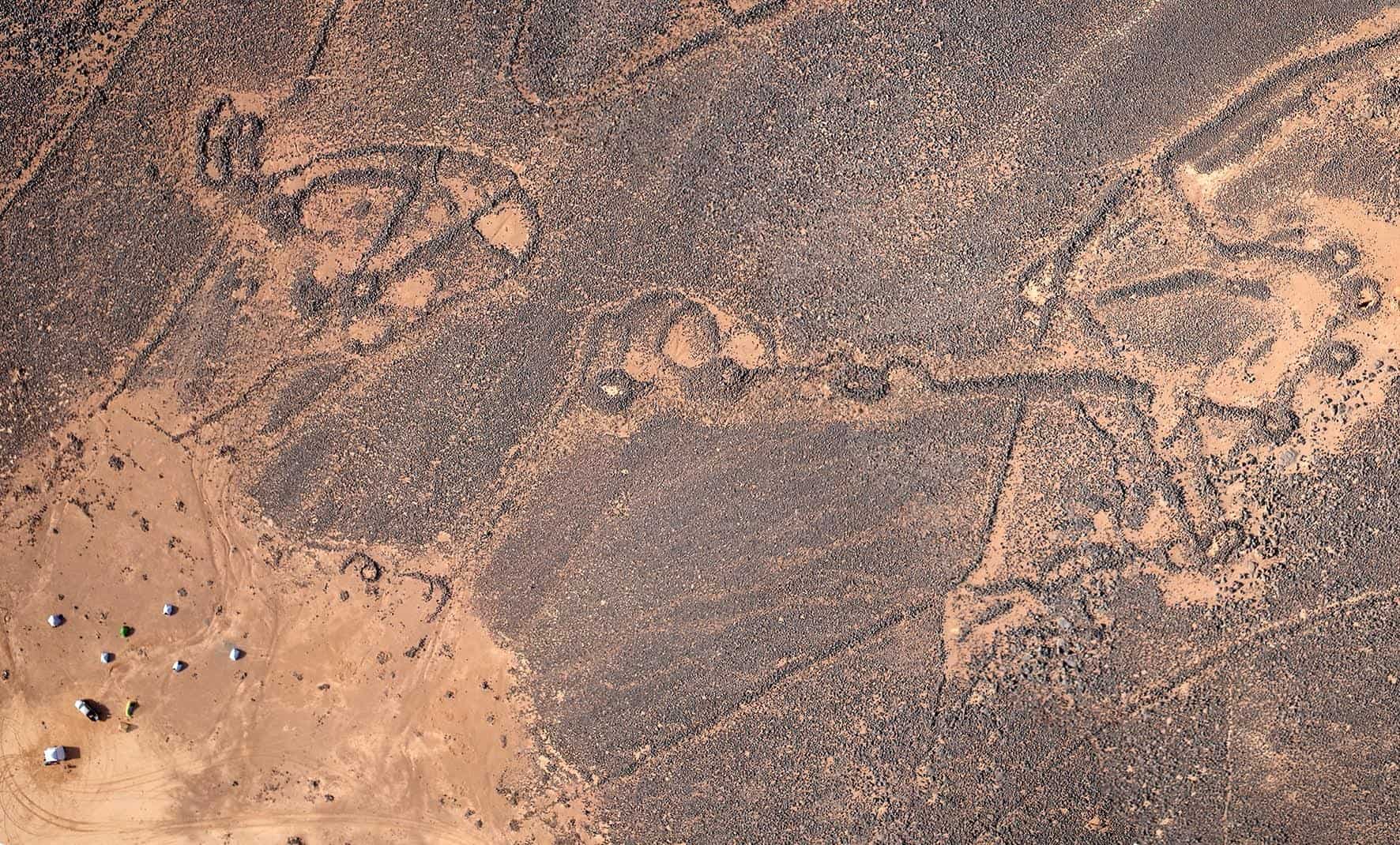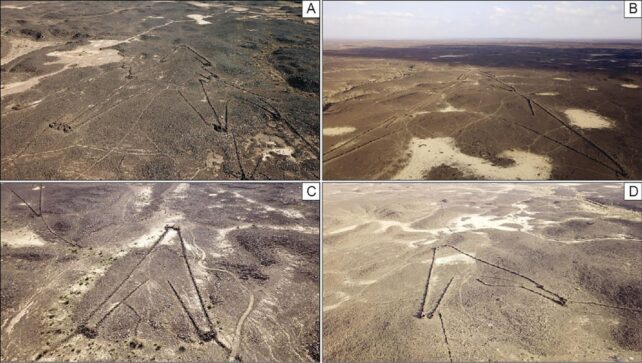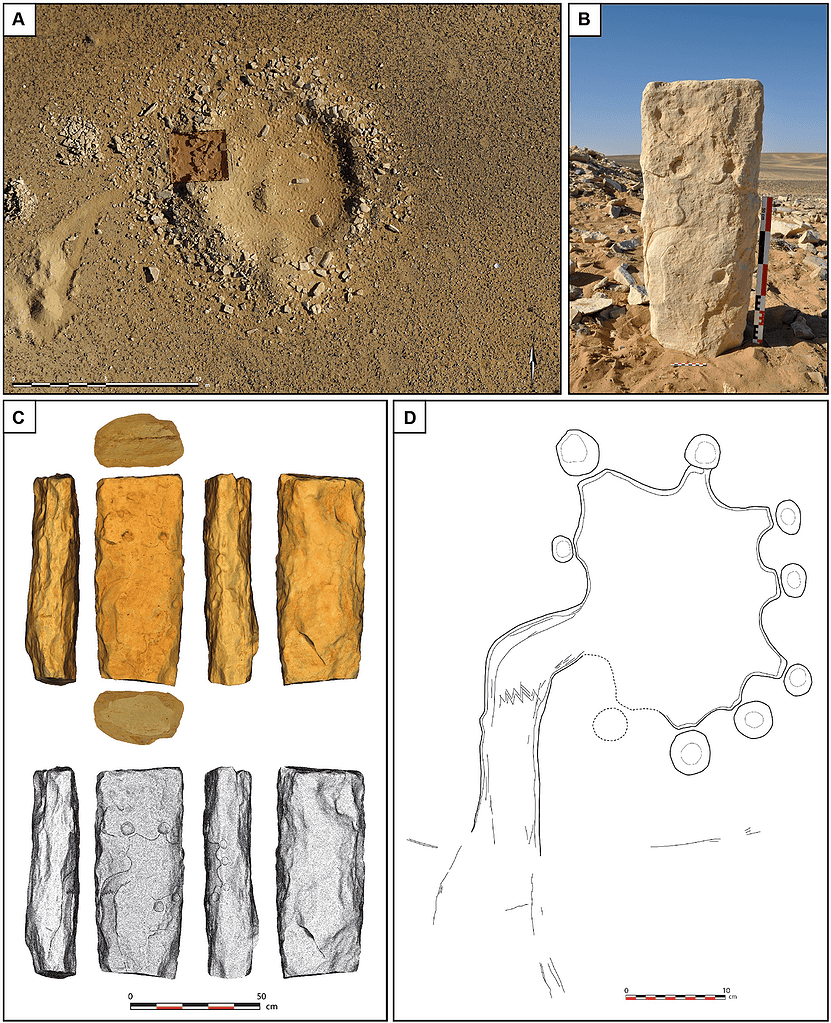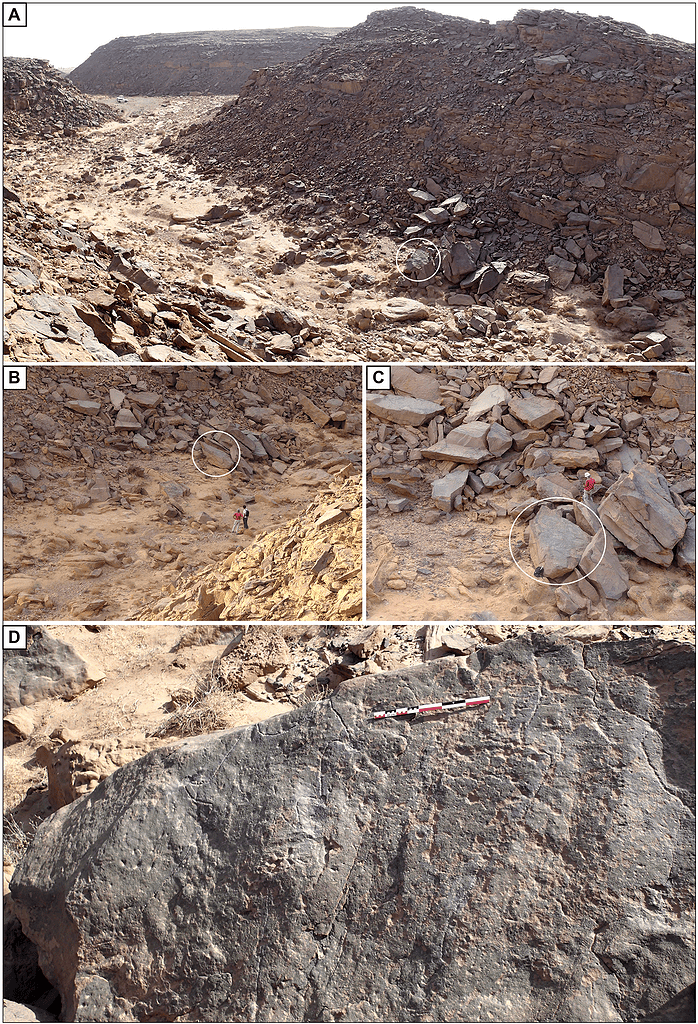
Archaeologists have found what could be the oldest examples of construction plans in human history, carved into stones in Jordan and Saudi Arabia between 7,000 and 8,000 years ago. The geometric patterns were matched with megastructures, leading the researchers to conclude that they might represent a blueprint guiding their creation.
The “extremely precise depictions,” as described by the researchers, display constructions called desert kites, named for their kite-like shape. They were sophisticated structures made up of stone walls that stretched up to five kilometers long, finally converging in an enclosure to trap animals surrounded by pits.
In the 1920s, British air force pilots first encountered these massive desert kites while flying above, bringing them to the attention of archaeologists. Since then, more than 6,000 of these structures have been identified, scattered across the Middle East and parts of Central Asia. They predate the Pyramids of Giza by almost twice the age.

“This reveals a widely underestimated mental mastery of space perception, hitherto never observed at this level of accuracy in such an early context. These representations shed new light on the evolution of human discernment of space, communication, and communal activities in ancient times,” the researchers wrote.
The first blueprints?
The researchers unearthed two ancient engravings in Jordan and Saudi Arabia depicting kites. The first one was found in Jibal al-Khasabiyeh, Jordan, along with eight desert kites. It consists of a stone measuring 31.5 inches (80 cm) long and 12.6 inches (32 cm) wide, carved with stone tools. This artifact is approximately 7,000 years old.

The second engraving was discovered in Zebel az-Zilliyat, Saudi Arabia, where two desert kites are located 2.1 miles (3.5 km) apart. Excavations revealed an engraving measuring 150.4 inches (382 cm) long and 92.5 inches (235 cm) wide, created by pecking with hand picks instead of carving. This dates back approximately 8,000 years.

According to the new study, the engravings have an unparalleled level of precision, setting them apart from earlier human proto-maps previously discovered in Spain, Ukraine, and the Czech Republic. The earlier maps, while impressive, were described as “abstract representations” rather than scaled depictions of actual landscapes.
Furthermore, the kite blueprints offer insights into the mindset of the Neolithic individuals who created them, the researchers said. This opens up additional questions about their ability to conceptualize structures that can only be fully comprehended from an aerial viewpoint – something likely to be looked at by upcoming studies.
“The ability to transpose large space onto a small, two-dimensional surface represents a milestone in intelligent behavior. Such structures are visible as a whole only from the air, yet this calls for the representation of space in a way not seen at this time,” the researchers concluded in their new paper published in the journal PLOS One.









